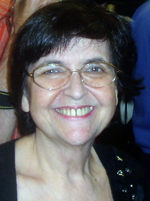
TheJewishVoiceAndOpinion.com
ENGLEWOOD, New Jersey — The symbol of Jerusalem’s Third Temple and its implications for Messianic Times, including world peace, universal brotherhood, and the end goal of the Jewish mission, looms large in Jewish, Christian, and even some Muslim traditions. According to the Bible, both the First and Second Temples stood on the Temple Mount in Jerusalem, and the Third Temple, as described and prophesied in the Book of Ezekiel, will be there, too.
In The Falconi Effect by Catriel Sugarman, that time has come. The Third Temple, called in Hebrew the Beit HaMikdash, is standing and operating, and the world is changing.
The book is teeming with information, but, because it is such a good story, the facts—historical, religious, and even architectural—go down easy. This is not a dry textbook. It is a fun read.
This is no mean feat. The construction of the Beit HaMikdash assumes the disappearance of two Muslim shrines, the Dome of the Rock and the al-Aqsa Mosque, both of which were built on the site of the neglected Temple Mount immediately after the Muslim conquest of Jerusalem in 638 CE. Small wonder that, in literature, the subject of the Third Temple is generally handled gingerly, if at all, and, when it is explored, it is loaded with spiritual symbolism and other-worldly visions.
Not so in The Falconi Effect. In Sugarman’s sturdy, knowledgeable hands, the Temple is a very real place, imbued as much with quotidian living as it is with End Times mythology.
A craftsman in wood and metals who has actually completed a miniature model of the Beit HaMikdash, Sugarman is well-versed in the intricacies of the building, its functions, and its maintenance. His model, the result of 500 hours of research and two years of construction, is considered a masterpiece of gold, silver, bronze, and fine wood by both patrons of the arts as well as Hebrew scholars. It is now part of a private collection, but Sugarman’s detailed slides of the work and his descriptions of what they show have been part of a lecture he has presented throughout the world.
Sugarman’s knowledge of the Temple lies at the base of The Falconi Effect, and the story he weaves, like the structure itself, flows naturally once the ground rules are accepted. How do the Levites know who among the visitors to the Temple are actually in a purified state? How is it that the High Priest understands the inner workings of the minds of men and women whose goodwill can affect the efficient working of the Temple and spread the word of its mission? Sugarman doesn’t answer these questions. This is just the way things are once the Third Temple stands on the Temple Mount.
Sugarman is as interested in what world peace and brotherhood will look like as he is with the computer technology that is necessary so that the administrative staff of the Temple can ensure the requisite flax is delivered on time for the sewing of the priests’ vestments for Yom Kippur. He is as interested in the potential of powerful media to be used by the High Priest as he is in the conversion of hard-nosed journalists into writers and envoys spreading the message of peace and the goals of the Temple.
This story, which is filled with information about the Temple, the history of the Jews, and the tradition’s image of what an ideal world will look like, is not about a struggle between good and evil. There are no villains here. This is a tale of transformations.
Careful readers of The Falconi Effect should not be surprised to find themselves transformed, too. According to Jewish tradition, those who study the Book of Ezekiel and immerse themselves in the details of what the Third Temple will look like are, in fact, engaged in building the Beit HaMikdash, too. The Falconi Effect may just be the perfect postscript to the Book of Ezekiel.
*
Rosenbluth is editor of The Jewish Voice and Opinion of Englewood, NJ, and TheJewishVoiceAndOpinion.com